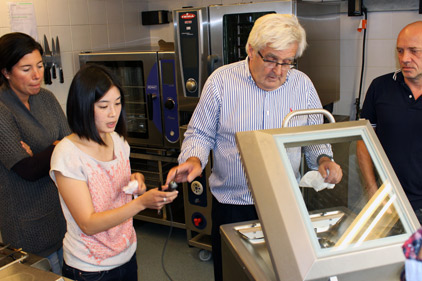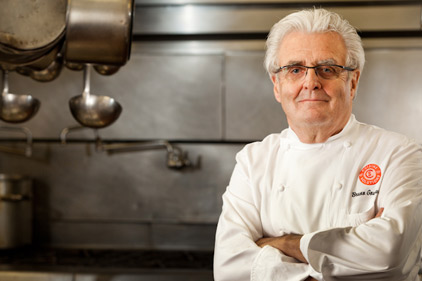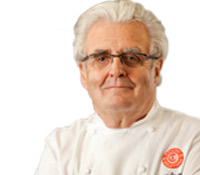|
Meet... Dr. Bruno Goussault Chief Scientist, Cuisine Solutions
Education: Ph.D. in Economics, Universtiy of Paris Pantheon; and a post-graduate degree from the Institut d'Etudes du Développement Economique et Social (IEDES) Experience: In the 1960s, Goussault worked for the United Nations in Africa and improved techniques for milling sorghum and millet. Then, back in France, he invented a super-quick-cooking two-minute rice. While working as a meat specialist in 1971, Goussault discovered that if roast beef was vacuum-sealed in a specially designed pouch and slowly cooked at a slightly-lower-than-usual temperature, it showed little sign of profit-robbing shrinkage compared to conventional cooking methods. Plus, the flavor was notably enhanced.. Other: Goussault also heads up the faculty at the Culinary Research and Education Academy, (CREA), a school he founded in 1991 to train chefs on the art and science of sous-vide. Cuisine Solutions is the parent company of CREA. |

|
| Bruno Goussault with students at the Culinary Research and Education Academy, Paris. |
|
Prepared Foods’ “Food for Thought” feature interview series involves food company R&D professionals, nutritionists, research chefs and other industry executives.
Goussault: The objectives and challenges of sous-vide cooking are two-fold. On the one hand, you first need to develop a food’s taste, texture and colors. And at the same time, you need to destroy the vegetative forms of pathogenic bacteria to ensure it is safe to eat. We have discovered that it is possible to realize both of those objectives at the same time if you follow the proper techniques. |

